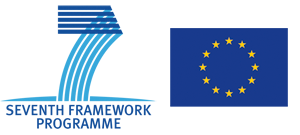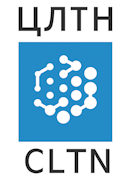

"New production technology development for most efficient and more stable application of electro-optic and nonlinear optical crystalline materials"
Abstract
The main goal of this proposal is development of new production technology for most efficient and more stable application of crystalline materials as active elements of electro-optic or nonlinear optical cells, especially for control and/or conversion of superpowerful laser radiation. In the framework of such technology it is proposed to create new electro-optic interferometric setup and modernize existing nonlinear optical setup as well as to develope the necessary fundamental methodology being suitable for precise determination and calculation of complete sets of electro-optic tensor coefficients or nonlinear optical second order susceptibilities in crystalline materials of different symmetry. Using these setups author plans to study the electro-optic and nonlinear optical characteristics of doped lithium niobate and borate family crystals or other low symmetry prospective inorganic/organic crystalline materials. It is therefore expected to derive for these materials a complete tensor sets of electro-optic or nonlinear optical coefficients that will represent input parameters for further 3D-analysis of spatial anisotropy of investigated effects using constructed indicative surfaces and their stereographic projections. On this basis the global maxima of electro-optic or nonlinear optical effects for selected crystals will be determined and for these maxima their angular stability will be calculated using improved own software. In the final step it is planed to design the laboratory prototype of such cell suitable for more efficient and stabil control or conversion of superpowerful laser radiation made of mentioned above crystalline materials. Thus it will be a significant contribution in development of new production technology for most efficient and more stable application of electro-optic and nonlinear optical crystalline materials.
| Researcher: | D.Sci., prof. Andrushchak A.S. |
|---|---|
| Acronym: | TeMESAMa |
| Funding scheme: | Marie Curie Actions�International Incoming Fellowships (IIF) |
| Call (part) identifier: | FP7-PEOPLE-2010-IIF |
The results of the project are summerized in such reports:
TECHNICAL REPORT FOR THE 01 QUARTER
Technique modernization of measurement for all components of electro-optic tensor in low-symmetry crystals
| Content | 2 |
|---|---|
| Introduction | 3 |
| 1. Design of two-fold measurements method for filling of linear electro-optic effect tensors in crystals | 4 |
| 1.1. Target setting for full studies of linear electro-optic effect in crystal of all symmetry classes | 4 |
| 1.2. Derivation of working relationships for calculation of all the coefficients of linear electro-optic effect for crystals of triclinic symmetry | 7 |
| 1.3. Relationships for determination of electro-optic coefficients for crystal of higher symmetry classes | 18 |
| References | 22 |
TECHNICAL REPORT FOR THE 02 QUARTER
Technique design for the measurement of all nonlinear optical coefficients in crystalline materials of different symmetry. Searching for, choice and purchase of the crystalline materials for the experimental electro-optic and nonlinear optical investigations
| Content | 2 |
|---|---|
| 1. Experimental techniques for the study of nonlinear optical properties of crystalline materials | 3 |
| 1.1. Non-linear optics � the background | 3 |
| 1.2. Experimental techniques in nonlinear optics | 7 |
| 1.3. Second harmonic generation (SHG) and Maker fringes | 10 |
| 2. Searching for, choice and purchase of the crystalline materials for the experimental electro-optic and nonlinear optical investigations | 18 |
| 2.1. Selection and purchase of necessary crystal materials | 18 |
| 2.2. Crystal availability for electro-optic or nonlinear optical applications | 18 |
| 2.3. Facilities for growth and mechanical treatment of crystals | 28 |
| References | 31 |
TECHNICAL REPORT FOR THE 03 QUARTER
Verification of the optical quality of the crystalline materials and preparation of required cuts for determining the necessary electro-optic and nonlinear optical coefficients
| Content | 2 |
|---|---|
| 1. Experimental techniques for the study of nonlinear optical properties of crystalline materials | 3 |
| 1.1. Non-linear optics � the background | 3 |
| 1.2. Experimental techniques in nonlinear optics | 7 |
| 1.3. Second harmonic generation (SHG) and Maker fringes | 10 |
| 2. Searching for, choice and purchase of the crystalline materials for the experimental electro-optic and nonlinear optical investigations | 18 |
| 2.1. Selection and purchase of necessary crystal materials | 18 |
| 2.2. Crystal availability for electro-optic or nonlinear optical applications | 18 |
| 2.3. Facilities for growth and mechanical treatment of crystals | 28 |
| References | 31 |
TECHNICAL REPORT FOR THE 04 QUARTER
Design and approbation of necessary experimental interferometric setup for measurement of all the components of electro-optic tensors in crystalline materials. Measurement of all the components of electro-optic tensor for mechanically �free� samples in selected crystals
| Content | 2 |
|---|---|
| 1. Design of experimental interferometric setup for measurement of all the components of electro-optic tensors in crystalline materials | 3 |
| 1.1. Peculiarities of electro-optic effect studies in crystals | 3 |
| 1.2. Relative measurement of electro-optic coefficients | 5 |
| 1.3. Measurement of absolute electro-optic coefficients | 11 |
| 1.4. Engineering development and manufacture of optic-mechanic part of equipment for crystal electro-optic coefficients measurement | 12 |
| 2. Experimental measurement of all coefficients of linear electro-optic effect on the example of LiNbO3 crystals in case of �free� samples | 17 |
| 2.1. The measurement technique description | 17 |
| 2.2. Approbation of measurement method on example of lithium niobate crystals in case of �free� samples | 21 |
| References | 26 |
| Publications of researcher | 29 |
TECHNICAL REPORT FOR THE 05 QUARTER
Modernisation of the experimental setup for measurement of nonlinear optical coefficients in crystalline materials. Measurement of nonlinear optical coefficients, performing of necessary calculations of different contributions in second-order nonlinear tensor, phase-matching conditions for investigated materials
| Content | 2 |
|---|---|
| 1. Modernization of the experimental setup for measurement of nonlinear optical coefficients in crystalline materials. Measure-ment of nonlinear optical coefficients and performing of neces-sary calculations for investigated materials: example of pure and MgO doped lithium niobate | 3 |
| 1.1. The second harmonic generation (SHG) as technique for measurement of nonlinear optical coefficients in crystalline materials | 3 |
| 1.2. Modernized setup for the SHG studies | 6 |
| 1.3. Lithium niobate: physical properties and application in non-linear optics | 8 |
| 1.4. Non-linear and electro-optical optical investigations on MgO doped lithium niobate crystals | 12 |
| 1.4.1. General considerations | 12 |
| 1.4.2. Quantitative characterization of the electro-optical effect in NLO materials: MgO doped lithium niobate | 15 |
| 2. Method of extreme surfaces for optimizing geometry of acousto-optic interactions in crystalline materials: example of LiNbO3 crystals | 18 |
| 2.1. Introduction | 18 |
| 2.2. Basic relationships and their analysis | 22 |
| 2.3. Method for optimization of acousto-optic interaction geometry | 31 |
| 2.4. Results and discussion | 36 |
| 2.5. Conclusions | 50 |
| References | 54 |
| Our publications | 59 |
TECHNICAL REPORT FOR THE 06 QUARTER
Development of electro-optical investigations, namely, the calculation of a complete set of electro-optic tensor coefficients for mechanically �clamped� samples. Construction of indicative surfaces and their stereographic projections for the longitudinal and transverse components of electro-optic effect tensor for investigated crystals
| Content | 2 |
|---|---|
| 1. Development of electro-optical investigations on the example of LiNbO3 and LiNbO3:MgO crystals | 3 |
| 1.1. Technique description of electro-optical measurements | 3 |
| 1.2. Relationships for calculation of all coefficients of linear electro-optic effect in investigated crystals | 5 |
| 1.3. The results of experimental measurements | 7 |
| 1.4. The analysis of experimental results and calculation of a complete set of electro-optic tensor coefficients for mechanically �clamped� samples | 10 |
| 2. Construction of indicative surfaces and their stereographic projections for the longitudinal and transverse components of electro-optic effect tensor for investigated crystals | 14 |
| 2.1. Principles of construction and basic relationships for indicative surfaces of electro-optic effect tensor | 14 |
| 2.2. Indicative surfaces of the linear EO effect in LiNbO3 and LiNbO3:MgO crystals | 17 |
| 2.3. Indicative surfaces of electro-induced phase retardation | 26 |
| 2.4. Conclusions | 32 |
| References | 33 |
| Our publications | 36 |
TECHNICAL REPORT FOR THE 07 QUARTER
Construction of indicative surfaces and their stereographic projections for the electro- and nonlinear optical effect in investigated structures, including for all spatial directions of phase matching. Spatial anisotropy 3D-analysis and searching for the extreme magnitudes for these effects in investigated materials
| Content | 2 |
|---|---|
| 1. Construction of indicative surfaces and their stereographic projections for the electro- and nonlinear optical effect in investigated crystals. Example of electric-field-induced optical pathlength change in LiNbO3:MgO crystals: spatial anisotropy 3D-analysis | 3 |
| 1.1. Introduction | 3 |
| 1.2. Analytical presentation of indicative surfaces of electric-field-induced optical pathlength change. Derivation of basic equations for example of LiNbO3:MgO crystals | 6 |
| 1.2. Derivation of working relationships for calculation of all the coefficients of linear electro-optic effect for crystals of triclinic symmetry | 7 |
| 1.3. Indicative surfaces of electric-field-induced optical pathlength change of LiNbO3:MgO crystals and their spatial anisotropy 3D-analysis. The results of experimental measurements | 12 |
| 1.4. Conclusions | 22 |
| 1.5. References | 23 |
| Our publications | 27 |
TECHNICAL REPORT FOR THE 08 QUARTER
Calculations of stability increasing for maxima of electro-optic and nonlinear optical effects in investigated crystals. Development of the new production technology for most efficient and more stable applications of crystalline materials on the base of investigated crystals
| Content | 2 |
|---|---|
| 1. Angular stability of electric field-induced effects in crystalline materials. Calculations of stability increasing for maxima of piezo-electrical and electro-optical properties for example of LiNbO3:MgO and La3Ga5SiO14 crystals | 3 |
| 1.1. Introduction | 3 |
| 1.2. Basic concept and methodology | 5 |
| 1.3. Indicative surfaces of piezo-electrical and electro-optical properties of LiNbO3:MgO and La3Ga5SiO14 crystals and angular bandwidths of their extrema | 10 |
| 1.3.1. Basic relationships for the indicative surfaces | 10 |
| 1.3.2. Analytical analysis of the piezo-electrical effect indicative surfaces and their angular bandwidths | 15 |
| 1.3.3. Numerical results for LiNbO3:MgO crystals | 18 |
| 1.3.4. Numerical results for La3Ga5SiO14 crystals | 28 |
| 1.4. Conclusions | 30 |
| 2. Development of the new production technology for most efficient and more stable applications of crystalline materials on the base of investigated crystals | 33 |
| 2.1. Calculation of electrooptic interaction efficiency increasing for investigated electrooptic crystals on basis of indicative surfaces of induced path difference | 33 |
| 2.2. Conclusion | 41 |
| References | 43 |
| Our publications | 47 |


